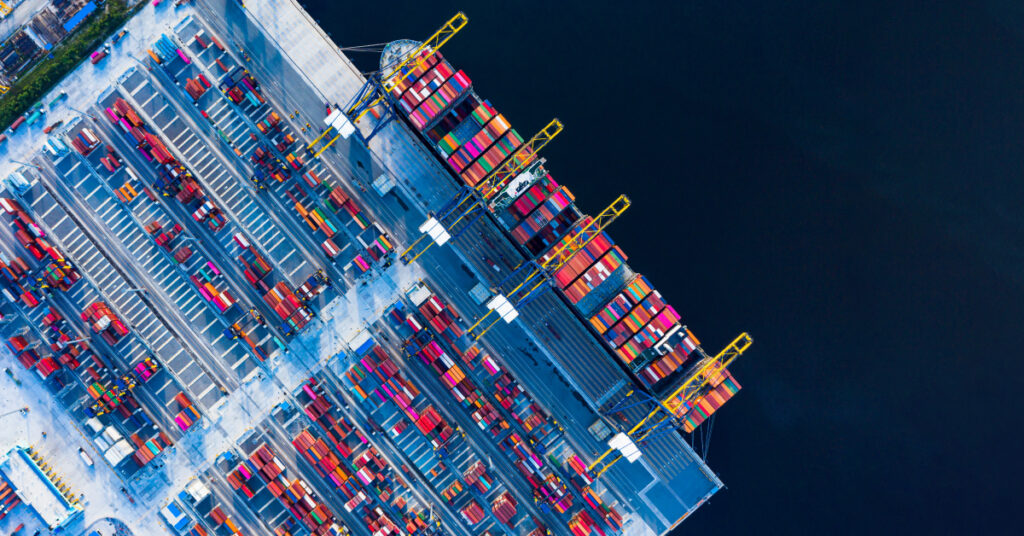The way companies handle transportation and logistics changed dramatically in 2022 as organizations worked through the lingering impacts of the pandemic, dealt with new challenges and revisited their long-range success plans.
Just a few years ago it wasn’t unusual at all to see warehouse employees walking around making notes on clipboards, transportation managers sending individual emails to carriers every time they needed a load covered and warehouse managers relying on spreadsheets for inventory management.
Fast-forward to today and the logistics, transportation and warehousing industries have become decidedly more automated, streamlined and less manually-intensive thanks to technology. What was known as an “old school industry sector” has been pushed into the digital age by a mix of factors, including customer demand, a persistent labor shortage and the ongoing need to do more with less.
Technology to the Rescue
To both offset the challenges and leverage new opportunities in 2022, shippers turned to technology and logistics partners. Using transportation management systems (TMS) for example, companies can more efficiently and effectively handle their freight at a time when customers are demanding shorter and shorter delivery times.
Technology also helps companies pivot their transportation modes, create backup plans in case of disruption and automate processes that used to be handled manually—thus freeing up valuable (and scarce) human labor to focus on more important, value-added projects.
Expect the trend to continue in 2023 as more companies invest in the solutions and applications they need to keep their supply chains running smoothly and predictably.
“As they continue to grapple with supply chain disruptions and complexities, companies are increasingly turning to technology and automation to help them work through these challenges,” Logistics Management points out. “This approach has become even more important during the current labor shortage, where ‘throwing more people at the problem’ is no longer a viable or affordable option.”
A Focus on Sustainability
Heading into 2023, shippers are also dealing with policy changes and a growing interest in all things related to environmental, social and governance (ESG) standards. Both carriers and shippers alike continue to look for ways to reduce their carbon footprints in this area.
“Sustainability is an increasingly important consideration for all sectors of the economy, including logistics providers,” McKinsey points out in Key trends in US logistics according to 70 CXOs. “Retailers and other heavy users of logistics systems have made strong ESG commitments for the coming years.”
Help Wanted
In 2023, companies will continue to come up with new ways to attract, hire and retain their valuable human resources in the midst of an ongoing labor shortage. With an average employee turnover rate of 49%, for example, the nation’s warehouses have been struggling to keep positions filled. And with the driver shortage expected to reach 160,000 nationwide by 2030, according to the ATA, the transportation sector is feeling similar pain points right now.
“Since we last released an estimate of the shortage, there has been tremendous pressure on the driver pool,” an ATA spokesperson said. “Increased demand for freight, pandemic-related challenges from early retirements, closed driving schools and DMVs, and other pressures are really pushing up demand for drivers and subsequently the shortage.”
Wanted: More Resiliency and Agility
With resiliency and agility at the forefront of every supply chain and logistics manager’s mind right now, expect to see an even bigger focus on building networks that can withstand disruptions in 2023. “It’s not just about a ship stuck in the Suez Canal or the war in Ukraine, which are both disruptive courses,” Logility’s Mark Balte tells Logistics Management. “Supply chains also face minor events every day that can ultimately add up into some disruption within the organization.”
More to Come
To help shippers manage the complexities of the current logistics environment and leverage new opportunities that may emerge in 2023, logistics providers are extending their services portfolios—both upstream and downstream—and expanding their existing services across more geographies, industries or transport modes. Expect to see more innovation and change ahead for logistics and transportation in 2023.
“The logistics and transportation industries have always evolved, and 2023 will be no different,” SupplyChainBrain reports. “The goals remain the same: resilience, efficiency, reliability, speed and quality. COVID-19 tested our industry, forcing the adoption of new technologies and business models.”
A Reliable Logistics Partner in Your Corner
In 2022 even more companies learned the value of having reliable logistics partners in their corner. These relationships can go a long way in helping companies make sense of and navigate the ever-changing transportation environment. Odyssey Logistics spent much of the year helping companies solve their most pressing logistics challenges and offering adaptive multimodal logistics on a global scale.
Using analytics, carrier relationships, specialized assets, sustainability strategies and deep international expertise, Odyssey supports some of the world’s most complex supply chains. With unique capabilities, technologies and assets that support the end-to-end supply chain, Odyssey Logistics helps shippers achieve their goals in any business conditions.








